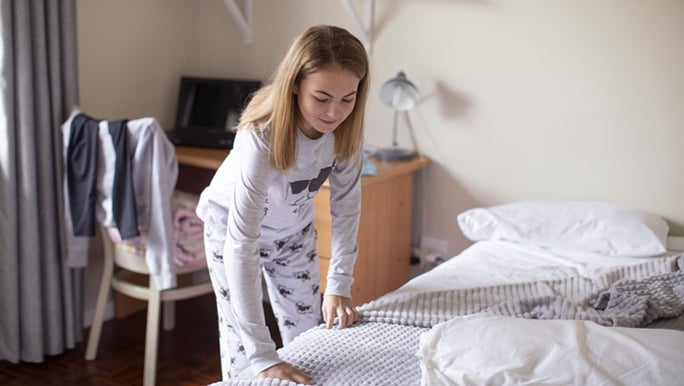How a kids’ routine chart could help you create a more organised home

Kids thrive on routine. Yes, that’s right, those tiny, unpredictable humans who act in incomprehensible, random ways actually love structure and routine.
Why? Routine helps kids to feel safe. Researchers have found that the presence of family routines may lead to better social-emotional health in preschoolers. That, in turn, may lead to developing more confidence and resilience.
And, looking further ahead, young adults who’ve had more family routines during adolescence often have more positive outcomes, including:
- greater emotional self-regulation
- less alcohol use
- higher rates of university enrolment
But as much as routines are great for kids, they’re not just great for kids. Introducing a kids’ routine chart into your home can also help to ease your mental load and may help family life overall run more smoothly.
The benefit of a kids’ daily routine chart
Are you forever reminding your kids to clean their teeth? Or put on their shoes? Or do their homework? Or any of the countless other things you need them to do every day?

How to get your kids to exercise
Are you looking for ways to get your kids off the couch? You’re not alone. We share some fun physical activities for all types of kids.
If so, a kids’ daily routine chart could make a big difference to your family and life.
A routine chart for kids is like their version of an adult task list. You already know how satisfying it is to tick items off your list. Well, it’s the same for kids.
But instead of taking responsibility for reminding your kids to do an endless list of tasks or chores, you empower them to manage their own daily routines.
And because they enjoy ticking off items on their routines, it ends up making everyone’s life easier. Perhaps try setting up:
- a morning routine chart for your kids to help manage the busy morning rush
- an afternoon routine chart to make bedtime less stressful, or
- a broader routine chart to encompass the whole day

Introducing a routine chart can help your family life run more smoothly.
Elements of a successful kids’ routine chart
To create an effective routine chart for your kids, avoid overcomplicating it. The chart doesn’t need to be perfect, professionally printed or insta-worthy. It just needs to work.
To make that more likely, here are four key principles to follow:
1. First define the routine
You can’t create a routine chart for your kids unless you first identify the routine you want them to follow. Define exactly what you want to include in your kids’ morning and afternoon routines, according to their needs.
2. Allow for flexibility
A routine is about structure, but that doesn’t need to mean military precision. Routines can change, or vary between kids, and that’s OK.
For example, you might have tweens going through the ups and downs of puberty or a teenager distracted by their first crush. In either case, their routines will be very different to the one you’d map out for a toddler.
Design all routines with flexibility, so they can evolve with your family.
3. Get the kids involved
If you want your kids to own their routine charts, you need to involve them in the process.
Of course, the degree to which you can do this will depend on their age. For a preschooler, it could be as simple as colouring in their chart. For an older child, you might ask them to decide what they want their routine to look like.
4. Incorporate wellness activities
A routine isn’t just about chores. It’s also important to include time for self-care or wellness activities – and that’s just as true for your kids as it is for you. Make sure you include things like time for the kids to spend on their gratitude journal or for a family dance break.

A routine isn’t just about chores. It’s also important to include time for self-care or wellness activities.
Making your routine chart work for you
Putting a routine chart together is one thing. Actually using it to get the intended benefit is something else altogether.
So how do you make sure the kids (and you) follow the chart and stick to your routine?
The first thing is to make the routine chart visible and easy to use. Whether the chart involves simple, printed cards stuck to a wall, or magnets on the fridge, it needs to be somewhere the kids can see it. If it’s out of sight behind a cupboard door, it’s also out of mind.

Building resilience in children
Want to know how to build resilience in children? This article outlines four key activity areas that can help your kids become more resilient and provide them with important skills they can use throughout their lives.
You also need them to follow the routine consistently. One skipped day can easily turn into two, three or more. Don’t be hard on yourself if there’s a slip-up, but do jump straight back into it to get that routine moving again.
Finally, be sure to regularly reflect on and review your routine chart. Is it still working for your family? Major life changes like a divorce or similar life events can require re-evaluating your family routine and possibly making changes.
Routine charts for the win
It seems like such a small thing, but a routine chart has the power to transform your day. It can help to make life flow and create time to celebrate the little things in life.
Keep it simple to take back control over your day – the whole family will be better off for it.
Related:
Reviewed by the healthylife Advisory Board July 2021.